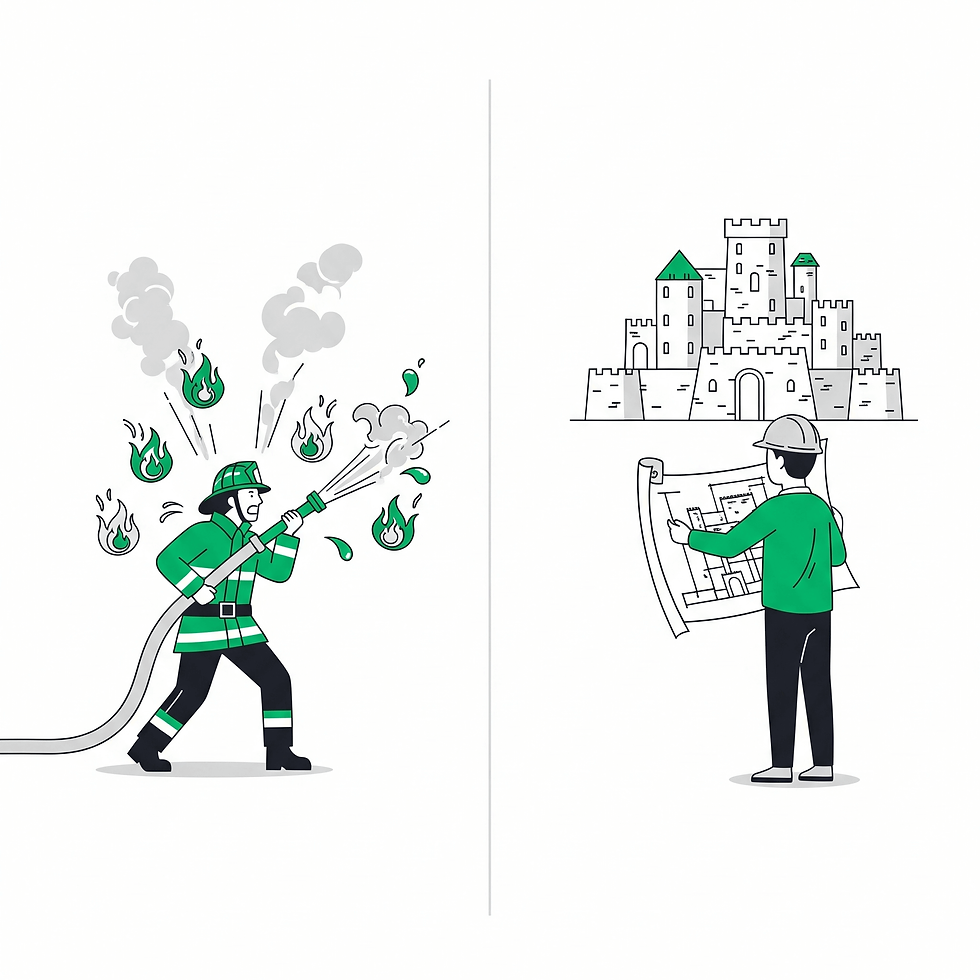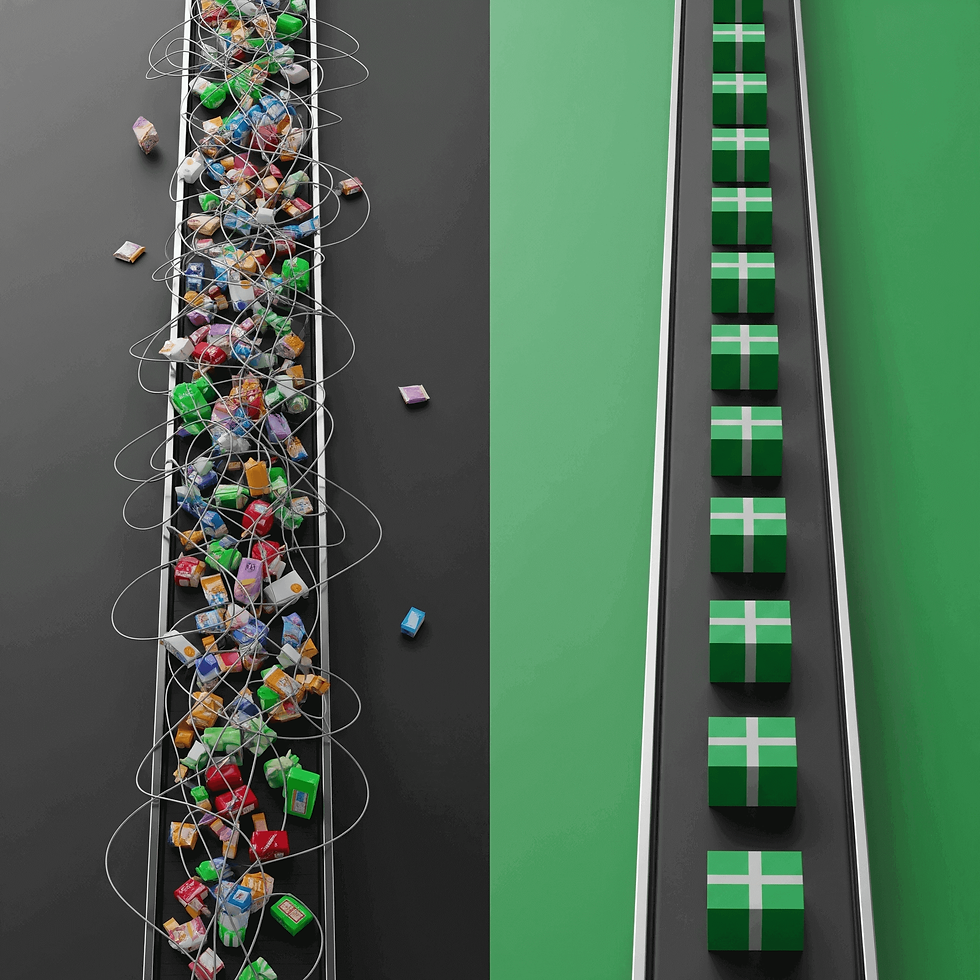5 Signs You're Leaking Revenue & Need a Customer Success Strategy
- vincelupe
- Jun 20
- 5 min read
Updated: Aug 11

In the relentless pursuit of growth, B2B leaders are laser-focused on acquisition – closing the next deal – landing the next big logo.
But, what if the biggest threat to your profitability isn't a competitor – but a leaky bucket within your own operations?
Many ambitious companies are unknowingly–sabotaged by poor B2B client retention, a problem that quietly–drains revenue, erodes brand reputation, and makes scaling feel like an uphill battle.
The hard truth is that reacting to problems as they arise is a losing game.
This article uncovers 5 critical signs that show your business is leaking revenue & demonstrate why a proactive, formal customer success strategy is no longer a luxury – but the cornerstone of sustainable growth in today's market.
1. The Revolving Door: Your Customer Churn Rate is Alarmingly High

The most obvious sign of trouble is high churn rate.
Losing customers is a natural part of business – but, when your "revolving door" spins too fast, it becomes a massive financial drain.
According to research highlighted by Harvard Business Review, acquiring a new customer is anywhere from 5–to–25 times more expensive than retaining an existing one (Gallo, 2014).
Furthermore, a mere 5% boost in customer retention can increase profitability by 25% to 95% (El Bahr, 2023).
If your team is constantly–scrambling to replace lost clients, you're caught in an expensive, demoralizing cycle.
A high churn rate isn't just a number; it's a symptom of a deeper issue.
It signals a fundamental disconnect between the value your clients expected – and the value they actually received.
What to Look For
An annual churn rate that outpaces your industry’s average.
For many B2B SaaS sectors, an "acceptable" annual churn rate is often cited as 5-7% (Murphy, 2020), though this varies.
Clients leaving within the first 90 days, indicating a failure in onboarding and/or initial value delivery.
A significant portion of your team’s time is dedicated to backfilling lost accounts instead of fostering growth.
2. The "Firefighting" Dilemma: Your Support is Purely Reactive

Does your customer service team’s daily routine resemble an emergency room?
If they spend all their time putting out fires, answering angry calls, and solving problems that should have been prevented, you're operating in a reactive "firefighting" mode.
This approach is not only inefficient – but, it also guarantees a poor customer experience.
In fact, 66% of customers say they would switch brands after just one bad service interaction, highlighting the immense cost of reactive problem-solving (Zendesk, 2025).
A proactive customer success strategy shifts the focus from reaction to prevention.
Anticipating client needs, providing resources before they ask, and guiding them toward their goals builds trust & transforms your service function from a cost center into a value driver.
Key Indicators of a Reactive Culture
Support tickets are overwhelmingly–focused on troubleshooting & complaints rather than strategic advice.
Your team has no bandwidth for proactive outreach, strategic check-ins, or relationship-building.
Customer satisfaction (CSAT) scores are low or inconsistent.
3. The Growth Ceiling: Stagnant Expansion Revenue & Low Customer Lifetime Value

Happy, successful customers don't just stay – they grow.
They upgrade their plans, buy new services, and become your most profitable accounts.
The probability of selling to an existing, happy customer is up to 14 times higher than the probability of selling to a new prospect (Rioux, 2020).
This means if a new sale is a difficult uphill climb, an expansion sale to a happy client is a pleasant walk in the park.
If you see little-to-no expansion revenue from your existing client base, you've hit a growth ceiling.
This is a clear sign that your clients are not realizing the full value of your offerings.
A robust customer success function is directly–tied to growing customer lifetime value (CLV).
Without a formal customer success strategy to nurture clients & identify growth opportunities, you leave your most accessible revenue on the table, consistently–choosing the hardest path to growth.
4. The Consistency Crisis: Your Customer Experience is a Game of Chance

As your business scales, it becomes harder to deliver a consistent experience.
One client might get a fantastic onboarding – while another feels lost & ignored.
This inconsistency is toxic to your brand.
B2B buyers crave predictability & reliability; an unpredictable experience erodes trust & makes them question your ability to deliver long-term.
Research shows that B2B customers use an average of 10 channels to interact with suppliers; 86% of them expect a great customer experience regardless of the channel they use (McKinsey & Company, 2025; SuperOffice, 2025).
A formal customer success strategy standardizes the client journey, ensuring every customer, regardless of their size or who they speak to, receives a consistently–high level of care through structured processes – like:
Standardized Onboarding Playbooks: Guiding every new client to their "first value" milestone quickly & efficiently.
Defined Health Scores: Using data to track client health & trigger proactive interventions before issues escalate.
Regular Strategic Business Reviews: Aligning your solution with their evolving business goals.
5. Flying Blind: You Lack the Data to Make Strategic Decisions

Do you know which of your clients are at risk of churning?
Can you identify your healthiest customers & understand why they are successful?
If the answer to either question is "no," you're flying blind.
Modern business growth is driven by data.
Without a framework to collect, analyze, and act on customer data, you're relying on guesswork.
A core function of customer success management (CSM) is to implement the systems that make data-driven decision-making a reality.
This function tracks key metrics such as product usage, engagement levels, support ticket trends, and health scores; this intelligence allows you to move from making assumptions to making data-driven decisions that boost retention & pinpoint growth opportunities.
Stop Leaking Revenue – Implement Your Customer Success Strategy
If any of these 5 signs resonate with you, it's time for a change.
The "leaky bucket" of high churn, reactive support, and inconsistent experience is preventing you from achieving truly sustainable growth.
The solution isn't another patch; it's building a stronger foundation.
A formal, proactive customer success strategy is the most powerful investment you can make in long-term profitability & market leadership.
It’s time you stop leaking revenue & start building a loyal client base that fuels your growth.
Ready to plug the leaks & build a world-class retention engine?
Veridian Growth Solutions specializes in creating the integrated CSM & BPO strategies that help B2B businesses – like yours – scale smarter. Book your free, no-obligation strategic assessment today, and let's build your path to maximizing your impact.



